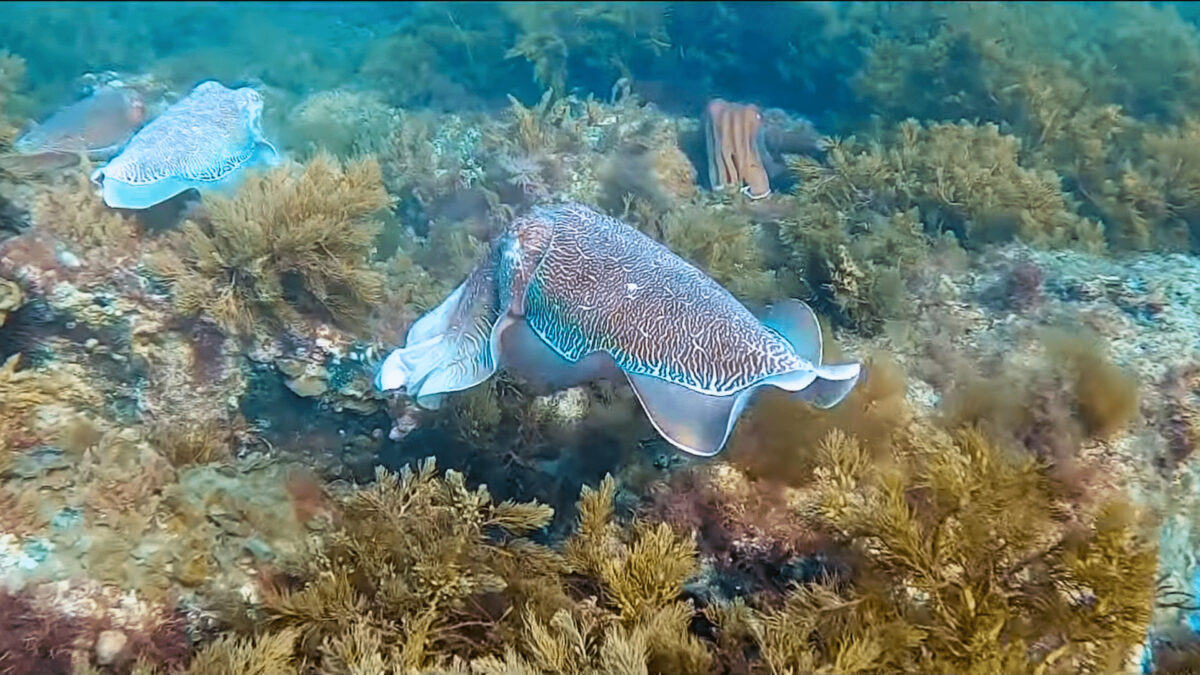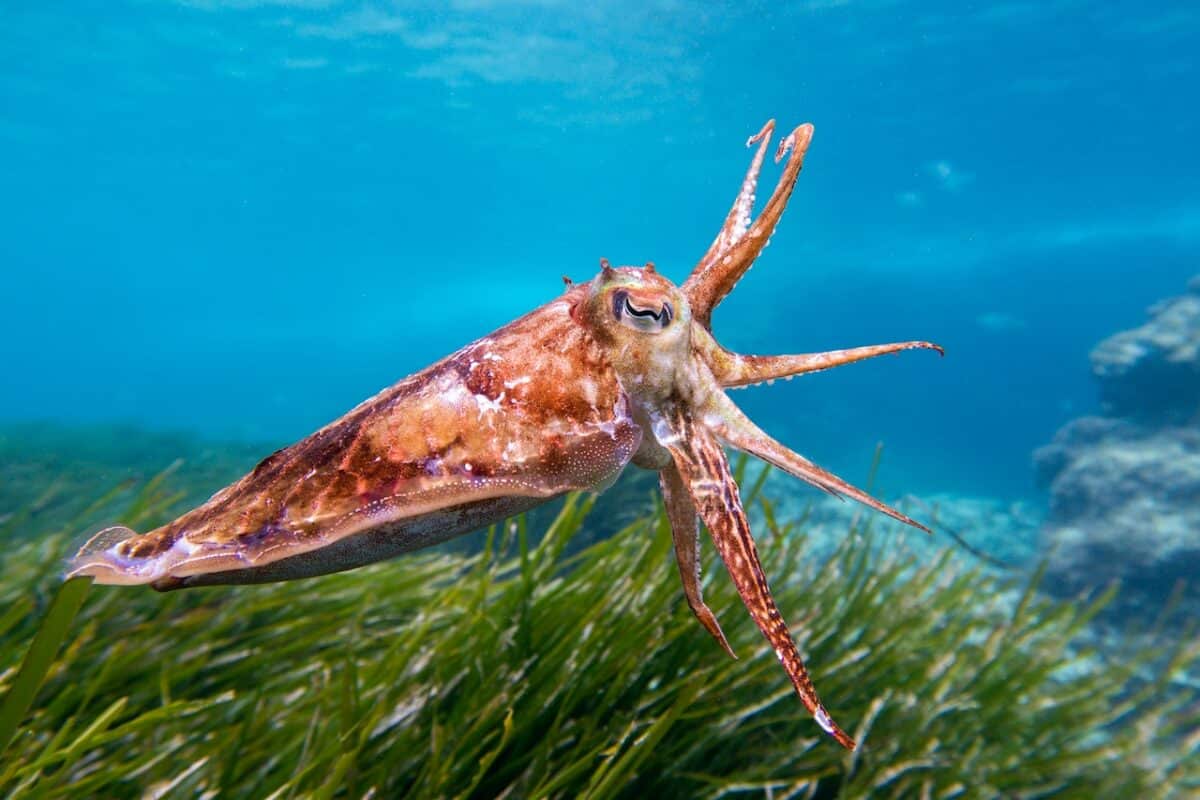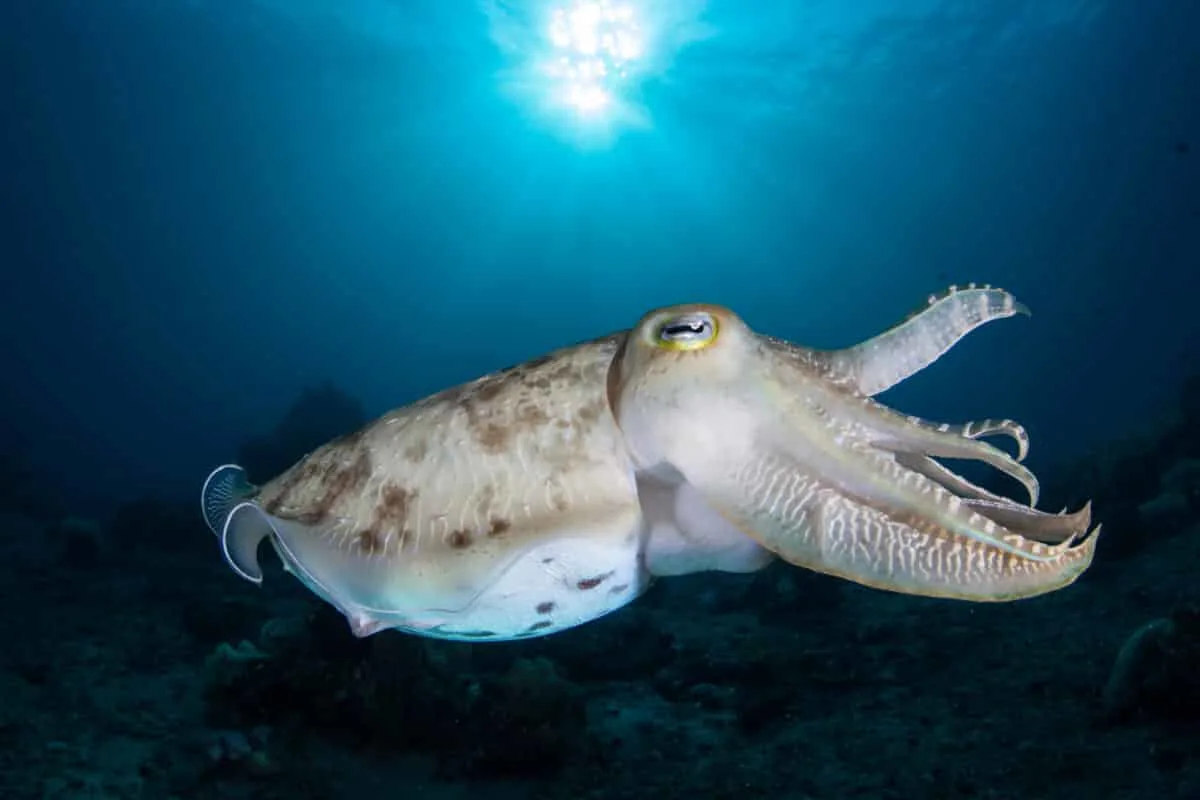Embark on a journey beneath the waves, where the ocean’s wonders unfold, and meet the colossal cephalopod—the giant cuttlefish (Sepia apama). Distinguished as the largest cuttlefish species globally, these marine marvels captivate with their impressive size, intriguing behaviors, and unique characteristics.
Discovering the Giants: Size and Habitat

The giant cuttlefish commands attention with a mantle length reaching up to 50 cm and an astounding total length of 100 cm, including its outstretched tentacles. Picture a creature that can weigh more than 10.5 kg, making it a true leviathan of the seas. These giants find solace in the rocky coral reefs, seagrass beds, and sandy or muddy seafloors along the southeastern coast of Australia, extending from Moreton Bay, Queensland, to the far reaches of Ningaloo Reef, Western Australia. Dwelling in depths as deep as 100 m, the giant cuttlefish showcases the versatility of its habitat choices.
Beneath the Waves: Cuttlefish or Fish?
Contrary to their name, cuttlefish are not fishes but molluscs, falling under the cephalopod mollusk category. They share close ties with squids and octopuses, showcasing their remarkable evolutionary path. With ten limbs at their disposal (eight arms and two tentacles), which are technically extensions of their foot, cuttlefish exhibit a fascinating blend of form and function. One of their most astonishing features lies in their ability to change color and skin patterns rapidly, thanks to specialized cells called chromatophores. This remarkable adaptation serves various behavioral purposes, adding a mesmerizing dimension to the underwater spectacle.
The Dance of Chromatophores: Rapid Color Changes
Imagine a creature capable of transforming its appearance in the blink of an eye. The giant cuttlefish achieves this feat through the mesmerizing dance of chromatophores, specialized cells present in its skin. These cells contain pigments and can expand or contract, enabling the cuttlefish to alter its color and pattern swiftly. Whether it’s for camouflage, communication, or courtship, the cuttlefish masters the art of visual storytelling beneath the waves.
The Culinary Explorer: Diet and Feeding Habits
As avid hunters of the deep, giant cuttlefish possess a carnivorous appetite. Their diet consists primarily of small fish, crustaceans, and other cephalopods. To capture their prey, cuttlefish employ a combination of stealth and strategy, utilizing their exceptional speed and agility. With lightning-fast strikes, they snatch their unsuspecting victims, showcasing the predatory prowess hidden within their elegant forms.
Life in the Depths: Unraveling the Cuttlefish Lifespan
The giant cuttlefish, despite its grandeur, lives a relatively short life. These cephalopods have a lifespan of just 1 to 2 years. Within this brief period, they navigate the intricate underwater world, engage in intricate mating rituals, and contribute to the delicate balance of marine ecosystems. Their ephemeral existence underscores the urgency of preserving their habitats and understanding the intricate web of life beneath the ocean’s surface.
In Conclusion: A Glimpse into the Enigmatic World of Giants

In the depths of the Australian seas, the giant cuttlefish reigns supreme. A testament to the wonders that the ocean conceals. From their colossal size to the mesmerizing display of chromatophores, these giants of the deep offer a captivating glimpse into the mysteries of marine life. As we continue to explore and appreciate the unique beauty of the giant cuttlefish, let us also recognize the importance of conservation efforts to safeguard these extraordinary creatures and the diverse ecosystems they call home. Dive into the realm of the giant cuttlefish, and let the ocean’s secrets unfold before your eyes.
Thank you for following along with this article –
Next up in the animal kingdom:
Join our Forum for free today!

- Big Cats Love Mouthing Affection - July 22, 2024
- Kind Elephant Merciful To Lion Cubs - July 22, 2024
- Beachgoers Save Massive Shark Stranded In Florida - July 22, 2024

